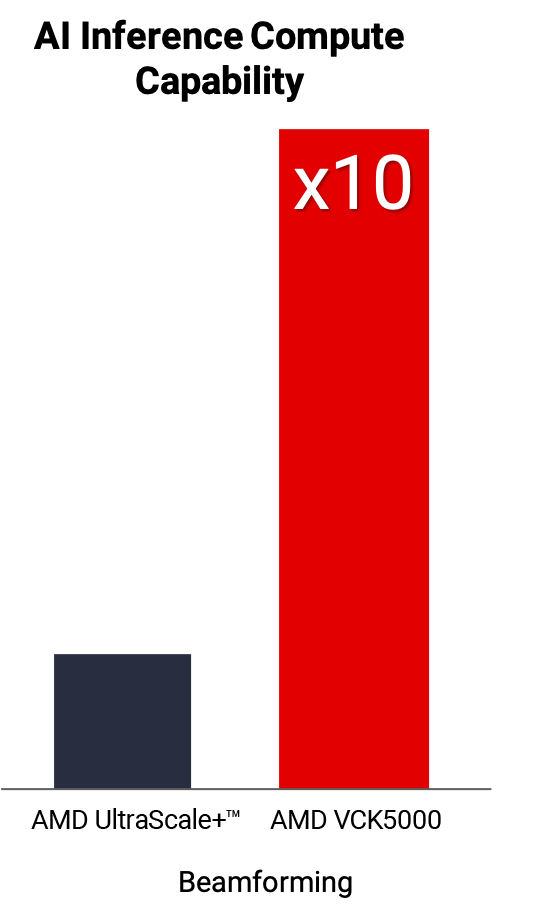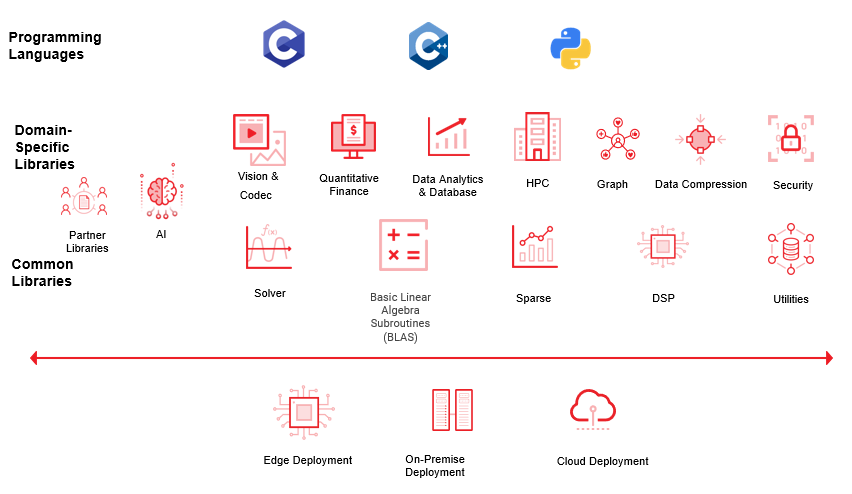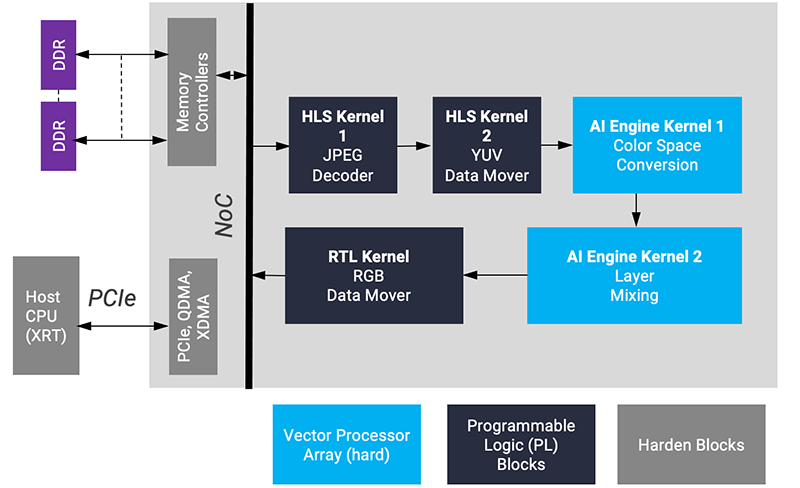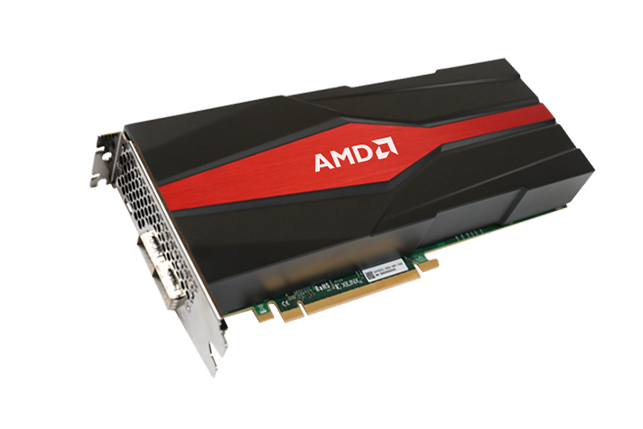
VCK5000 Versal Development Card
The AMD VCK5000 Versal development card is built on the AMD 7nm Versal™ adaptive SoC architecture and is designed for (AI) Engine development with Vitis end-to-end flow and AI Inference development with partner solutions. For full Vivado™ flow and device customization, please contact sales.
Overview
Product Overview
The AMD VCK5000 Versal™ development card is built on the AMD 7nm Versal adaptive SoC architecture and is designed to optimize 5G, data center compute, AI, signal processing, radar, and many other applications. Fully supported by Vitis™, Vitis AI, and partner solutions like Mipsology Zebra® and Aupera® VMSS, the VCK5000 domain-specific architecture brings strong horsepower per watt while keeping ease-of-use in mind with C/C++, software programmability.
Delivering the near 100% compute efficiency per watt in standard AI benchmarks and 2x TCO compared to the flagship nVidia GPUs, the VCK5000 development platform is ideal for CNN, RNN, and NLP acceleration for your cloud and edge applications.
Evaluate for Free on the Cloud
AI Inference
AI Inference Development
If you are an AI developer, bring your TensorFlow and PyTorch trained models to directly infer on Versal using Mipsology Zebra and build, configure, and deploy computer vision applications on FPGA platforms with Aupera Video Machine Learning Streaming Server solution.
Key Features
Explore partner solutions and articles, and learn about the key features for AI Inference Development with the VCK5000
2x TCO Reduction vs Mainstream nVidia GPUs
- 2x perf/w and perf/$ compared to Nvidia Ampere with standard MLPerf Models
- Achieves 90% compute efficiency
- Consume less than 100W at card level
2x End-to-End Video Analytics Throughput vs nVidia GPUs
- Full pipeline from H.264 decode to computer vision to up to 10 AI models
- Video decode and CV run on x86 CPU or discrete U30 Alveo card
- Plug-in based pipeline composition from FFmpeg / Gstreamer
ML Heavy: H.264 Decode + Yolov3 + 3x ResNet-18
Video Heavy: H.264 Decode + tinyYolov3 + 3x ResNet-50
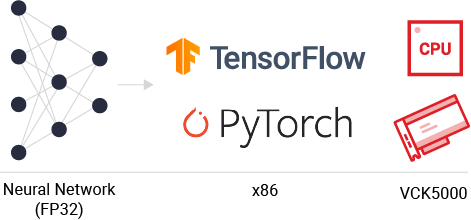
Easy to Use with Familiar Frameworks
- Easy-to-use software flow for any CPU & GPU users, no hardware programming required
- Run inference from Tensorflow framework directly on board
- State-of-the-art model supported with mainstream frameworks PyTorch, TensorFlow, TensoFlow 2 and Caffe
Partner Solutions
Mipsology Zebra AI Inference Solution
Mipsology Zebra Software
Zebra combines high performance with unprecedented ease of use and is AMD's preferred AI accelerator for computing neural networks for image-based AI applications.
Zebra seamlessly replaces GPU/CPU to compute any image based neural network faster and with lower power consumption. And with Zebra, there is no need to retrain or make any changes to your network or application. Zebra deploys with a simple Linnux command, so you don’t need FPGA knowledge to use Zebra.
Get 5 free demo hours of Zebra in the VMAccel® cloud
Aupera Intelligent Video Analytics Solution
Aupera Video Machine Learning Streaming Server Solution
Aupera VMSS is a software framework for Video AI inferencing applications. VMSS2.0 allows users to rapidly build, configure, and deploy Computer Vision pipelines using a graphical user interface (GUI); with no coding. Custom pipelines can be easily built using Aupera’s node toolkit, decoding, pre-processing, post-processing, etc.; or by creating custom nodes which can be uploaded, built, tested, and used all from the GUI.
Aupera’s commercial video AI applications can also be configured, launched, and visualized through this framework. Users have a choice of checking the results of their custom pipeline through video overlays or by sending text output.
Get 5 free demo hours of VMSS 2.0 in the VMAccel® cloud
Articles for AI Inference Development
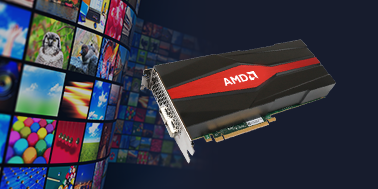
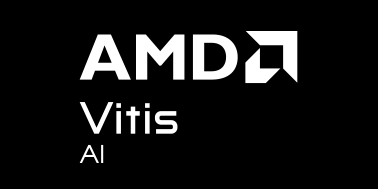

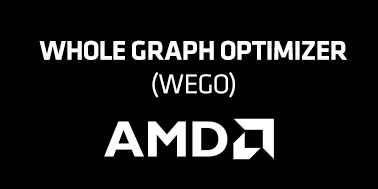
VCK5000 in Action
Data centers are increasingly turning to artificial intelligence to manage various tasks from monitoring equipment to server optimization. At the heart of the data center, FPGA-based adaptive computing is proving itself to be, in many cases, the most efficient and cost-effective solution for running complex AI workloads.
Here are the best uses of the VCK5000 developer card combined with Vitis AI from our 2021 Adaptive Computing Challenge



AI Engine
AI Engine Development
If you are looking to implement algorithm acceleration with AI engine and programmable logic, we provide AI engine C/C++ high-level abstraction APIs and Vitis Accelerated Libraries. The Vitis end-to-end flow is developed using C/C++ to run on X86 or embedded processors and manage runtime interactions with the accelerator with XRT. The hardware component, or kernel, can be developed using C/C++, or RTL target on PL or AI Engines.
Key Features

Power and Performance
- Up to 10x performance improvements compared to previous generation AMD UltraScale+™ with less power in diverse applications
- Industry-leading compute power: up 145 TOPS (int8); 37 TOPS (int16); 12T FLOPs (fp32)

Software Familiarity
- A familiar software development flow with Vitis unified software platform
- Accelerate your applications faster with AI engine C/C++ high-level abstraction APIs and Vitis Accelerated Libraries

Mixed Kernel Development
- Customize your own data pipeline with mixed kernels
- Develop AIE kernels in C/C++, PL kernels in RTL or HLS, and let Vitis stitch together the full system
Get Started with AI Engine Development
Step 1: Purchase
Purchase VCK5000 production silicon-based card
Step 2: Access Secure Site
Request access to the VCK5000 Versal Development Card Secure Site
Step 3: Get Started
Follow the getting started steps and installation guide in the VCK5000 Versal Development Card Secure Site
Articles for AI Engine Development
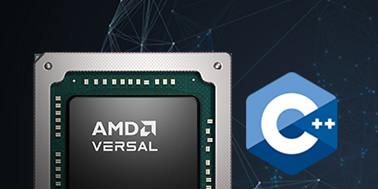


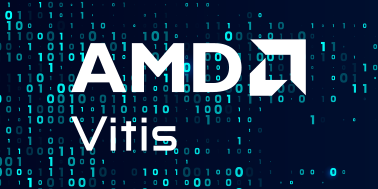
Board Specifications
| Card Specifications | VCK5000 | |
|---|---|---|
| Device | VC1902 | |
| Compute | Active | Passive* |
| INT8 TOPs (peak) | 145 | 145 |
| Dimensions | ||
| Height | Full | Full |
| Length | Full | 3/4 |
| Width | Dual Slot | Dual Slot |
| Memory | ||
| Off-chip Memory Capacity | 16 GB | 16 GB |
| Off-chip Total Bandwidth | 102.4 GB/s | 102.4 GB/s |
| Internal SRAM Capacity | 23.9 MB | 23.9 MB |
| Internal SRAM Total Bandwidth | 23.5 TB/s | 23.5 TB/s |
| Interfaces | ||
| PCI Express | Gen3 x 16 / Gen4 x 8 | Gen3 x 16 / Gen4 x 8 |
| Network Interfaces | 2x QSFP28 (100GbE) | 2x QSFP28 (100GbE) |
| Logic Resources | ||
| Look-up Tables (LUTs) | 899,840 | 899,840 |
| Power and Thermal | ||
| Maximum Total Power | 225W | 225W |
| Thermal Cooling | Active | Passive |
* We will ship the Active board only. If you remove the fans from the VCK5000, following the Hardware Installation Guide, it becomes Passive.


.png)
.png)
.png)
.png)

